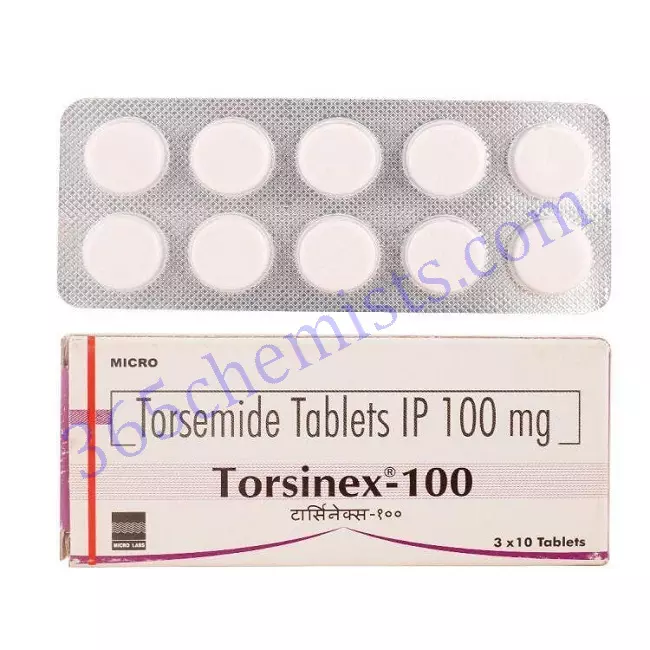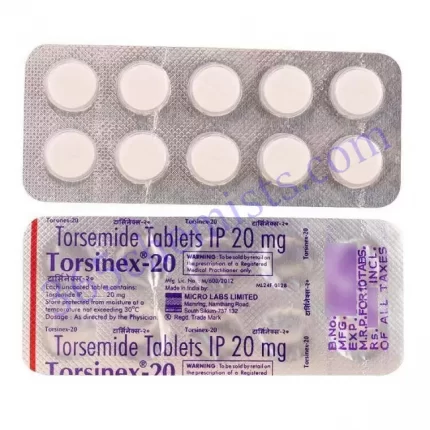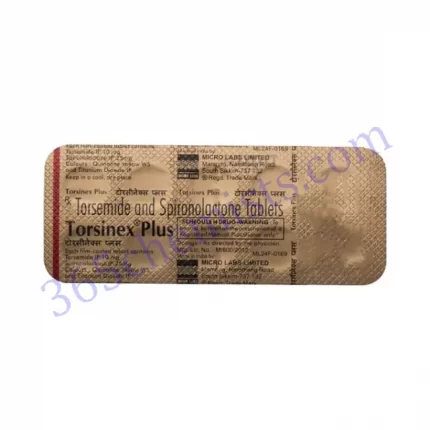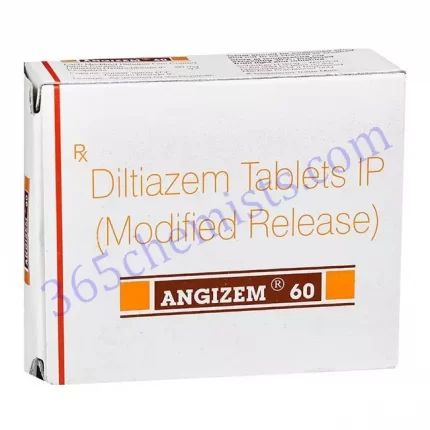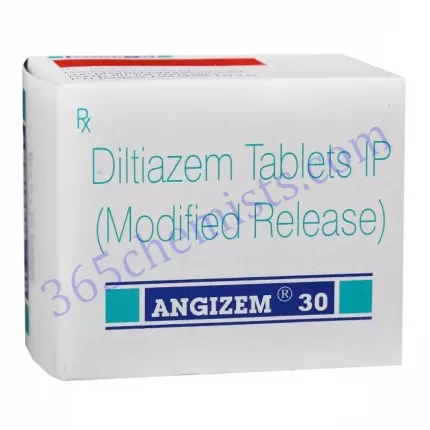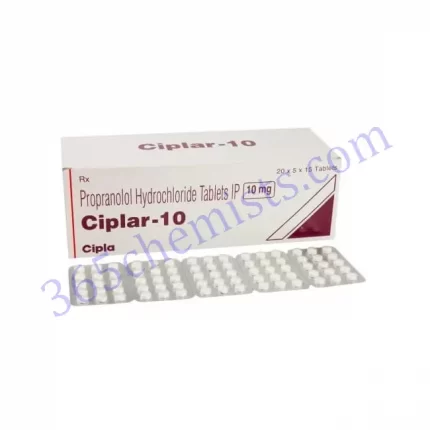Torsinex 100mg Tablet (Torasemide 100mg): A Potent Diuretic for Effective Fluid Management
The medication that belongs to the class of loop diuretics known as Torsinex 100mg Tablet is one that is frequently prescribed to patients. Its active component is torasemide, which has proven to be an extremely efficient treatment for the management of fluid retention (edoema) caused by a wide variety of medical conditions. Patients suffering from conditions such as congestive heart failure, liver cirrhosis, and kidney disorders are typically given the Torsinex 100mg Tablet by their treating medical professionals. This medication was developed to have a powerful diuretic effect, which helps the body get rid of excess water and salt more effectively.
Overview of Torasemide:
Torasemide, the primary ingredient in Torsinex 100mg Tablet, is a potent diuretic that works by inhibiting the reabsorption of sodium and chloride ions in the kidney tubules. This results in increased water loss from the body. This mechanism promotes the excretion of water, which ultimately leads to an increase in urine production and a reduction in the amount of fluid that is accumulated in the body. Torasemide is regarded as the medication of choice for the treatment of fluid retention because, in comparison to other loop diuretics, its effects continue to work for a longer period of time.
Clinical Indications:
The treatment of conditions in which fluid retention poses a risk to one’s health is the primary indication for the use of the Torsinex 100mg Tablet. Congestive heart failure is a condition that is characterised by the heart’s inability to pump blood effectively, leading to fluid retention. This medication is commonly used in the management of congestive heart failure. In addition, the Torsinex 100mg Tablet is helpful in the treatment of liver cirrhosis, which is a chronic liver disease that results in decreased liver function and an accumulation of fluid. It is also prescribed for patients who have renal disorders such as nephrotic syndrome or chronic renal failure, both of which can lead to an increase in fluid retention due to impaired kidney function.
Dosage and Administration:
It is possible for the recommended dosage of Torsinex 100mg Tablet to change depending on the patient’s age, the patient’s current medical condition, and the patient’s reaction to treatment. It is extremely important to take the medication exactly as directed by the healthcare professional, including following the dosage and administration instructions. Adults should begin treatment with an oral dose of 100 milligrammes once daily, preferably in the morning. This is the recommended starting dose. It is possible to adjust the dosage depending on how each individual patient reacts to the medication; however, the maximum daily dose of 400 mg should never be exceeded. The Torsinex 100mg Tablet may be taken either with or without food, and should always be taken with a full glass of water.
Related Product
Torsinex 10mg Tablet
Torsinex 20mg Tablet
Torsinex 100mg Tablet
Torsinex Plus 25mg Tablet
Precautions and Warnings:
Before beginning treatment with Torsinex 100mg Tablet, it is essential to think about the various precautions and warnings that come with the medication. It is possible that people who have a history of being hypersensitive to torasemide or any of the other inactive ingredients contained in the formulation should not take this medication. Patients who have a previous history of an allergy to sulfa should be treated with extreme caution due to the possibility of cross-sensitivity reactions. Electrolyte imbalances, such as hypokalemia (low potassium levels) or hyponatremia (low sodium levels), are a potential side effect of taking the Torsinex 100 mg Tablet. During treatment, it is recommended that levels of electrolytes be monitored on a regular basis. Women who are pregnant or breastfeeding shouldn’t use the Torsinex 100mg Tablet unless a medical professional has carefully evaluated their situation first.
Potential Side Effects:
Torsinex 100mg Tablet, just like any other medication, has the potential to cause certain adverse effects; however, not everyone will experience them. Increased urination, dry mouth, dizziness, headache, and muscle cramps are among the most frequently reported adverse effects of this medication. These adverse effects are, in most cases, relatively mild and transient. Nevertheless, it is recommended to seek immediate medical attention in the event that any side effects continue or become worse. Allergic reactions, severe dizziness, hearing loss, and irregular heartbeat are some of the less common but more serious adverse effects that may occur. In these kinds of situations, prompt medical attention is required without question.
Drug Interactions:
Torsinex 100mg Tablet may interact with other medications, which may reduce the effectiveness of those other medicines or raise the risk that they will have unwanted side effects. It is essential to provide the healthcare professional with information regarding all of the medications, including vitamins, herbal supplements, and over-the-counter drugs, that are currently being taken at the same time. There is a possibility that the nonsteroidal anti-inflammatory drugs (NSAIDs), angiotensin-converting enzyme (ACE) inhibitors, potassium-sparing diuretics, and certain antibiotics will interact with the Torsinex 100mg Tablet. The qualified medical professional will evaluate any possible drug interactions and make any necessary adjustments to the treatment plan.
Conclusion:
Torsinex 100mg Tablet, which treats fluid retention caused by a variety of medical conditions, contains the active ingredient torasemide and is a highly effective medication for managing this condition. Because of its powerful diuretic action, it assists in the elimination of excess water and salt from the body, thereby reducing the symptoms of edoema and enhancing overall health and wellness. It is essential to take the medication exactly as directed, including adhering to the dosage that was prescribed as well as any precautions and warnings that came with the medication. Maintaining consistent monitoring and open lines of communication with a healthcare professional will both maximise the therapeutic benefits and reduce the likelihood of undesirable effects.

